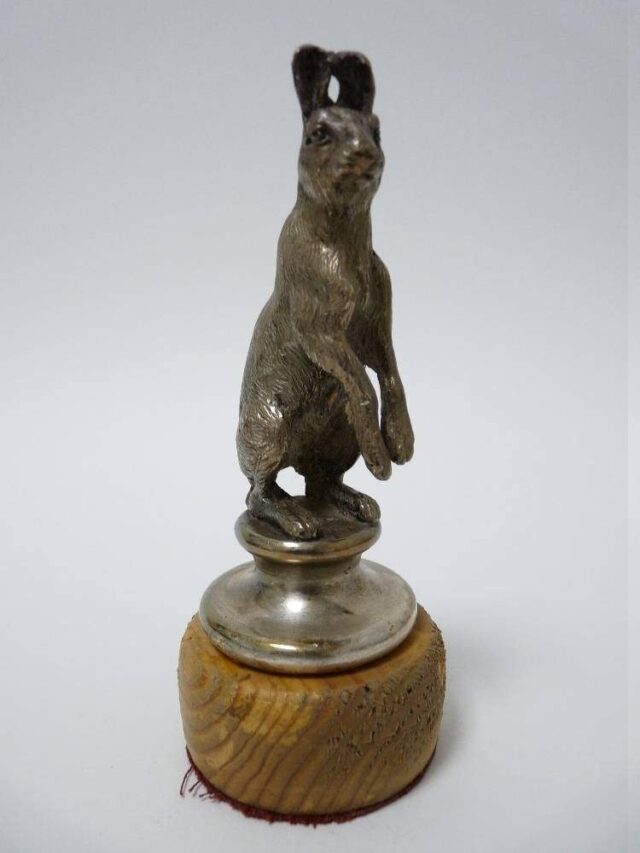Car Mascots
Car mascots have been around since the early days of motoring. Initially cars had radiator caps perched externally on the grill to indicate the temperature of the engine. The cap evolved into a method for proud car owners to personalise their pride and joy.
Such mascots (or hood ornaments in the US) became a popular adornment throughout the first period of motoring up until the 1950s. The most famous mascots were produced by the car manufacturers themselves, namely the star of Mercedes Benz, ‘The Spirit of Ecstasy’ for Rolls Royce and the leaping Jaguar. From these icons an industry of non-proprietary mascots was borne. The main countries for design and produce were France, UK and the US.
Mascots were made in various materials but most commonly in brass, glass, bronze or zinc and often with a chrome plated finish. Lalique and Sabino of France are the most famous glass mascot producers. In this auction there are fourteen Sabino opalescent glass mascots.
The Sabino Maitre Verrier company (Sabino Master Glassmaker) was founded in Paris in 1919 by Sicilian born Marius Ernest Sabino. He grew up in France, attending the L’Ecole Nationale Des Arts Decoratifs and Beaux Arts de Paris. His earlier production were metal chandeliers, mounted lamps and architectural accessories in moulded glass, and then after World War I he diversified into decorative objects in the Art Deco or Art Nouveau style including mascots.
One of the renown producers of metallic car mascots is A E Lejeune, represented by twenty three lots in our auction. Louis Lejeune Ltd is an English bronze foundry and the only surviving maker of car mascots from the Art Deco period. They were at one time, the producers of the iconic Rolls Royce ‘Spirit of Ecstasy’ mascot.




























